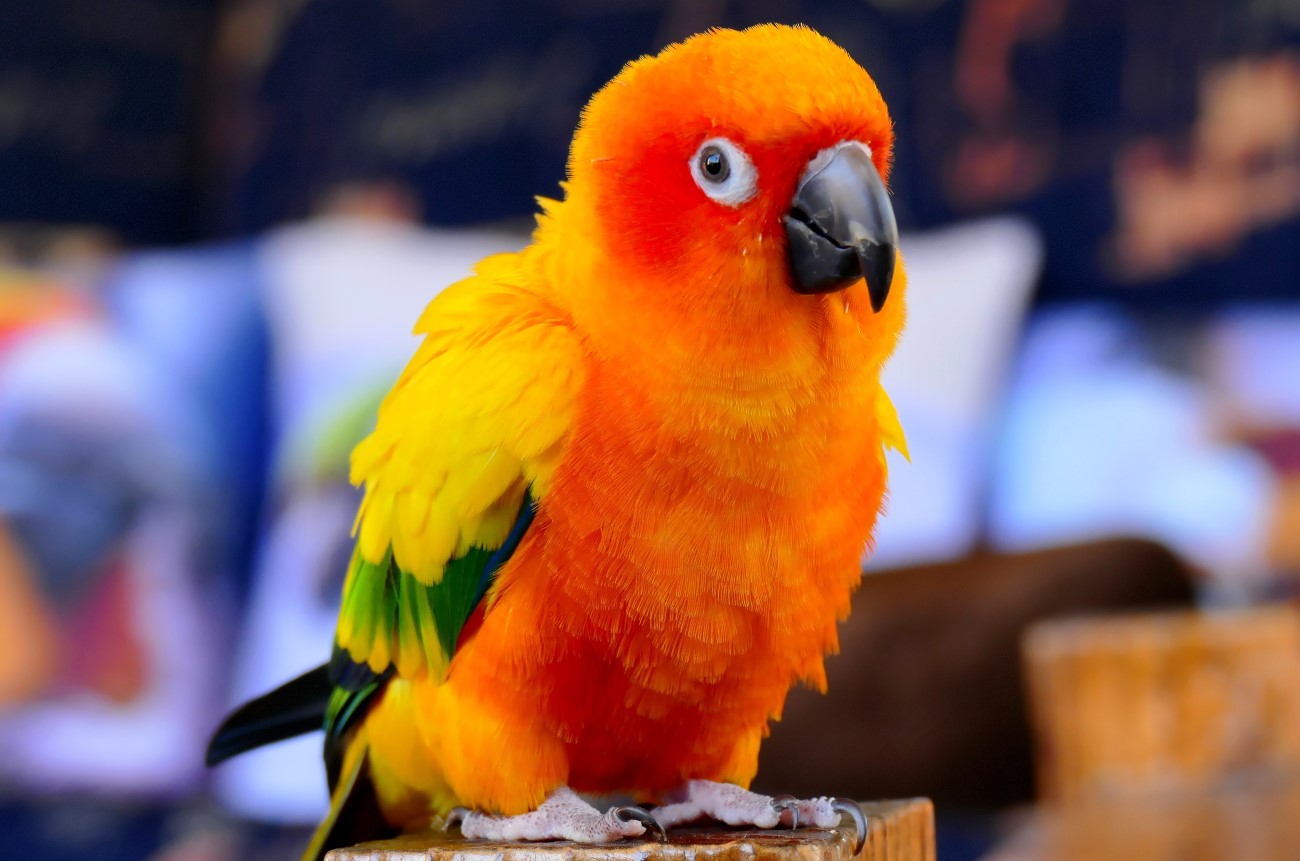JavaScript seems to be disabled in your browser. For the best experience on our site, be sure to turn on Javascript in your browser.
Answers to Common Conure Questions

Conures come in different ranges and sizes. Some examples include the diminutive painted conure (Pyrrhura picta) at 8 ½ to 9 inches and the much larger Patagonian conure (Cyanoliseus paragons) at nearly 20 inches in length.
They can also come in fiery orange, bright yellow, iridescent green, red-headed, black-hooded and many shades of colors in-between. Here are the answers to some common conure questions.
Can Conure Be Classified As A Parrot?
Conures, like other parrots, have a strong, curved bill (beak) and zygodactyl feet i.e. two toes facing forward and two back.
Depending on the species, a conure will either fall under the Aratinga, Pyrrhura, Nandayus, Enicognathus or Cyanoliseus category of parrot. They mostly have slender bodies and long, slender tail feathers.
Can A Conure Talk?
Conures are certainly very vocal with an array of contact calls and other sounds, but they are not among the most talkative group of companion parrot species. Some parrots
might have five or more words in their repertoire of mimicking human speech.
Do bear in mind that there is always an exception to this. Examples of parrots that belong to the talkative groups in the conure family include the Sun conures, Nanday conures and blue-crowned conures.
Telling If Your Conure Is Male Or Female
Just like most parrot species, conures are not sexually dimorphic. This means that male and female conures cannot be visibly distinguishable. You cannot tell a conure’s gender by looking at it. To know the sex of a conure, you need to order a DNA test kit. This would involve sending in a couple of drops of blood or a few moulted feathers. However, if your conure lays an egg you can be sure that she is female.
Types Of Toys Or Enrichment To Give Conures
Conures are a playful group of parrots that enjoy foraging for items to chew and eat. Toys created to encourage exercise should be on your shopping list. These toys would include swings, boings, ladders, bells, and foot toys.
The need to chew also means you would need to provide an extensive supply of bird-appropriate chew and destroy toys, such as those made of softwood and cardboard or with paper elements.
What Can You Feed Your Conure?
You could get your conure off to a good start by discussing with your avian veterinarian about a diet that will help ensure that your feathered friend has good nutrition. Conures can be regarded as “foodies” that enjoy a variety of healthy foods. They are also a group of social eaters that appreciate sharing in some of your healthy table selections, like your steamed vegetables, whole-wheat pasta, or rice and legumes.
Make sure a nutritionally complete base diet like a parrot pellet mix becomes a staple meal in your conure’s diet. Since conure parrots have the tendency to pick and chew their food, one way to give them extraordinary nutrition that is also fun to eat is some of our Scarlett parrot’s conure-size diets available. Conure food is available here.
Grooming Your Conure
These grooming methods should be done by an avian to stave off any injury to your conure. You have to clip its flight feathers to stave off escape or injury to itself.
Ensure your conure fingers are trimmed your conure's nails as soon as they are sharp to stave off injury to yourself or the bird. You can as well place some rough patches in your pet's cage to prevent this from happening altogether.
We have some Conure accessories that can be useful for this.
Conure HealthCare
Conures will moult sometime in autumn to replace the feathers they damaged during the year. So, it shouldn’t be a reason to worry except you neglect your pet alone or it has become bored.
Some behaviours and symptoms mean your feather friend may be at risk.
We have all your Conure Healthcare needs sorted out.
We hope you found this helpful.










